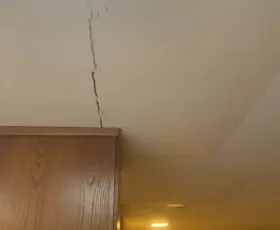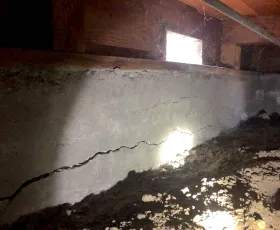Why Is There A Horizontal Crack In My Wall?
Table of Contents
1. What Is A Horizontal Crack In A Foundation Wall?
2. Why Is There A Horizontal Crack In My Wall?
3. So, What Causes Differential Settlement?
4. Are Horizontal Wall Cracks Serious?
5. How Are Horizontal Cracks Repaired?
6. How To Prevent Foundation Problems
Wondering why there’s a horizontal crack in your wall? If so, stick around because that’s what we’re going to talk about in this article. By the time you’re done reading this you’ll know what causes horizontal wall cracks, how to repair them, and more.
What Is A Horizontal Crack In A Foundation Wall?
A horizontal wall crack is a wall crack that’s more horizontal than vertical or diagonal. We hate to be the bearer of bad news but a horizontal crack in a wall is a sure sign of structural damage. If the underlying problem that caused the crack isn’t fixed, the structural damage will get worse and you’ll be looking at a more expensive repair. So, if you have a horizontal crack in your wall, contact a foundation repair contractor immediately for a foundation evaluation.
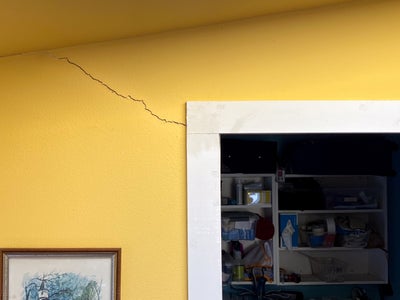
Why Is There A Horizontal Crack In My Wall?
Horizontal wall cracks are almost always caused by differential settlement, that is, when the foundation is sinking into the ground unevenly. All structures settle into the ground slightly after they’re built. This is pretty normal and nothing to worry about so long as the settlement is uniform. Problems start when the settlement is differential, that is, when only part of the foundation is settling. Differential settlement places tremendous stress on a foundation and this is what causes things like horizontal wall cracks and other problems.
But, not all horizontal wall cracks are caused by differential settlement…
Horizontal wall cracks in a foundation wall (basement or crawl space) are usually caused by one of the following:
- Hydrostatic pressure – Poor drainage around a foundation will cause hydrostatic pressure to build up in the soil and push against foundation walls. If the pressure isn’t relieved, it will eventually cause the wall to crack. The crack might be accompanied by bowing.
- Expansive soil – Expansive soil, which expands as it soaks up water, can exert pressure against a foundation wall and cause horizontal cracks.
- Frost heave – Soil expands as it freezes and pushes against the foundation walls. This can lead to horizontal cracks.
- Something heavy parked next to the foundation – Even something heavy like a dumpster or a large truck parked next to the foundation can cause horizontal cracks in a foundation wall.
Improper Drainage
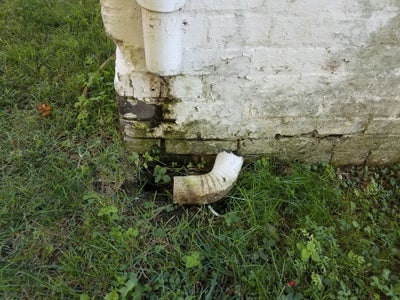
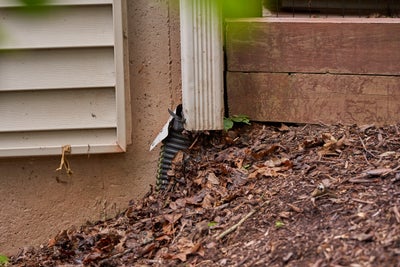
Expansive Soil
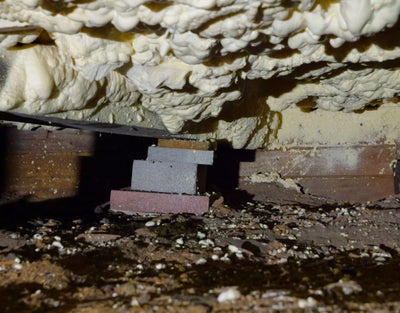

Horizontal cracks in foundation walls – which are sometimes accompanied by bowing – are usually a problem related to block foundation walls, not poured concrete walls. However, horizontal cracks in poured concrete foundation walls can form if the reinforcing steel inside the wall corrodes and expands.
Vertical cracks in a poured foundation wall are almost always caused by shrinkage during the concrete curing process. Shrinkage cracks are harmless, but can also allow water to seep through the foundation wall and into the basement or crawl space.
So, What Causes Differential Settlement?
Differential settlement is caused by various things including the following:
- Expansive soil – Expansive soil contains a lot of clay and because of this it swells as it absorbs moisture and shrinks as it releases moisture and dries out. This swelling-shrinking cycle creates movement in the soil under the foundation and can, over time, lead to differential settlement.
- Soil not adequately prepped before construction – Soil needs to sufficiently tamped down before anything gets built on top of it. If this isn’t done correctly, the structure could settle into the soil unevenly after it’s built.
- Natural disasters – Earthquakes, floods, tornados, hurricanes, etc., can all cause differential settlement.
- Heavy excavation next to the foundation – If someone starts digging a big hole too close to your home, it could destabilize your home’s foundation and lead to differential settlement.
- Weather changes after construction – An example of this would be building a house on top of expansive soil during the dry season. When the rainy season rolls around again, the soil swells and this can cause differential settlement.
For more information see, Foundation Settlement.
Are Horizontal Wall Cracks Serious?
Yes, horizontal wall cracks are serious. They’re considered structural cracks in that they affect a building’s structural integrity. This means they should be repaired immediately as soon as they’re spotted.
An example of a non-structural crack would be a vertical concrete shrinkage crack in a poured concrete foundation wall.
For more information see, Horizontal Foundation Cracks: Should You Worry?
How Are Horizontal Cracks Repaired?
The repair solution for a horizontal crack depends on what caused the crack. Was the crack caused by differential settlement or by hydrostatic pressure pushing against a foundation wall?
Possible Repair Solutions If A Horizontal Crack Was Caused By Differential Settlement
A horizontal wall crack caused by differential settlement is usually repaired via underpinning. Underpinning – using either push or helical piers – extends the foundation down to soil that’s able to support it. Once the piers are in place, a synchronized hydraulic lifting system raises the building to maximum practical level. When this is done, the cracks usually close.
Other possible repair solutions for differential settlement include drilled concrete piers and slab piers.
Possible repair solutions if a horizontal crack was caused by hydrostatic pressure, frost heave, or something heavy parked next to the foundation
Horizontal cracks caused by hydrostatic pressure, frost heave, or lateral pressure from something heavy, can be repaired using solutions such as wall plate anchors and carbon fiber straps. (Here in California, basement foundations are extremely rare. Therefore, these repair solutions apply to areas of the country with basement foundations.)
How To Prevent Foundation Problems
Since most foundation problems are caused by water – either too much or too little of it – you can go a long way toward preventing foundation trouble by simply getting groundwater under control via good drainage. Here are some ways to do that:
- Don’t plant vegetation next to the house – Flowers, shrubs, and trees all need water and you’re trying to avoid adding water to the ground around the foundation.
- Clean your gutters regularly – Clogged gutters can cause water to spill over the side of the house and soak the ground around the foundation.
- Install downspout extensions to carry runoff at least 4 feet from the foundation before releasing it.
- Regrade your yard so that it slopes away from the foundation. This is to prevent water from draining toward and pooling around the foundation.
- Install a drain tile system. When it comes to foundation waterproofing, a drain tile system is a gold standard. Instead of merely putting up a barrier to keep water out, it prevents excess moisture from building up in the soil around the foundation.
If your Northern California home has a horizontal wall crack that you’d like us to evaluate, contact us today to schedule an appointment.
More Resources
Publish Date:
Last Modified Date:
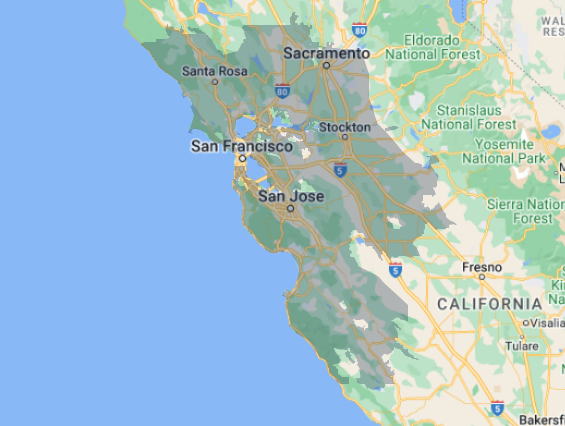
Our Locations
2333 Courage Dr. Suite C
Fairfield, CA 94533
1161 N Fair Oaks Ave
Sunnyvale, CA 94089


